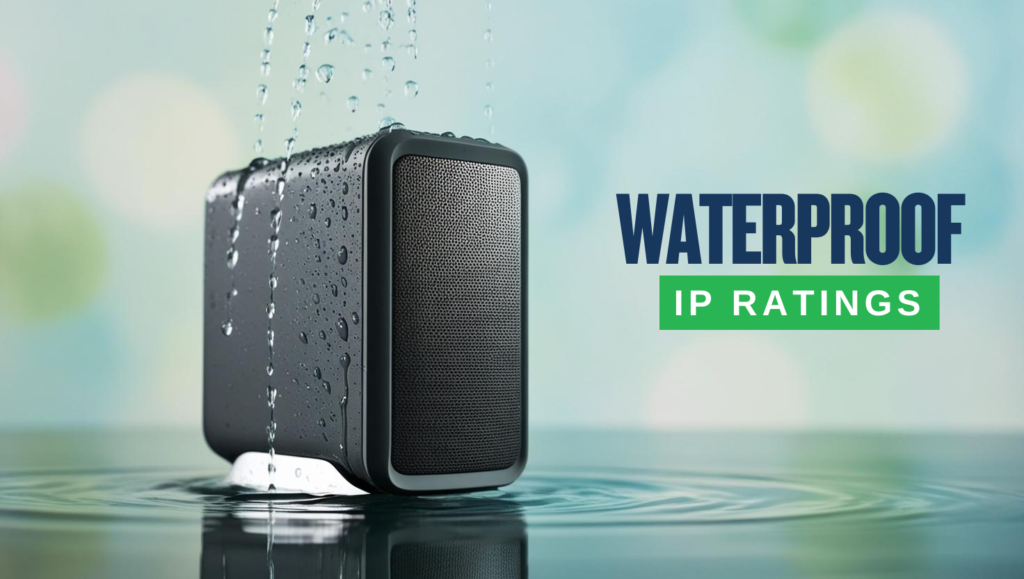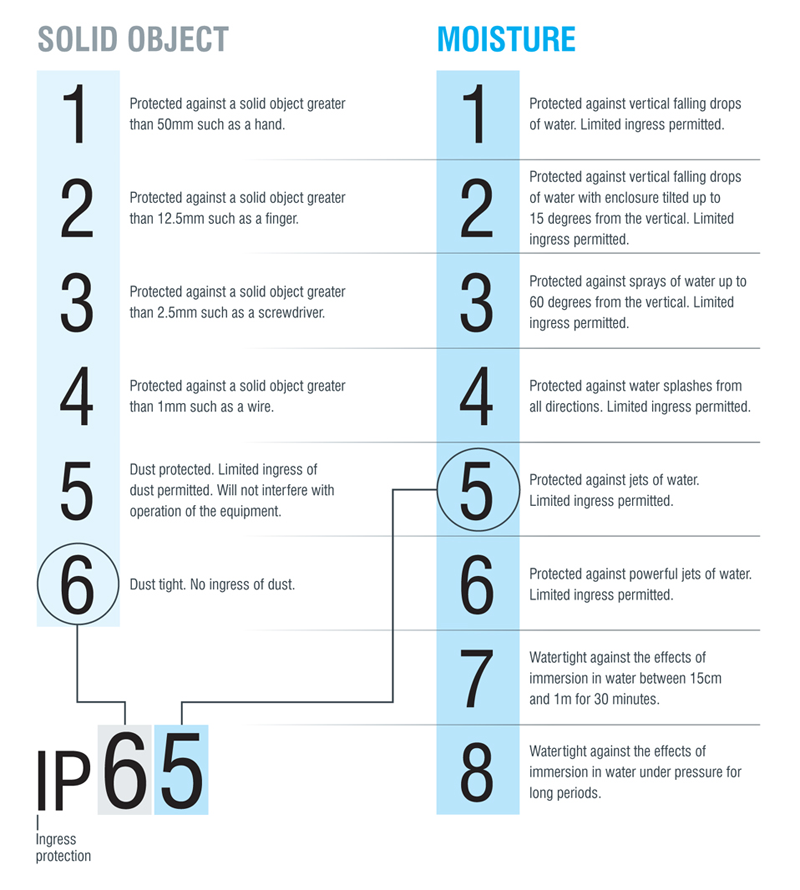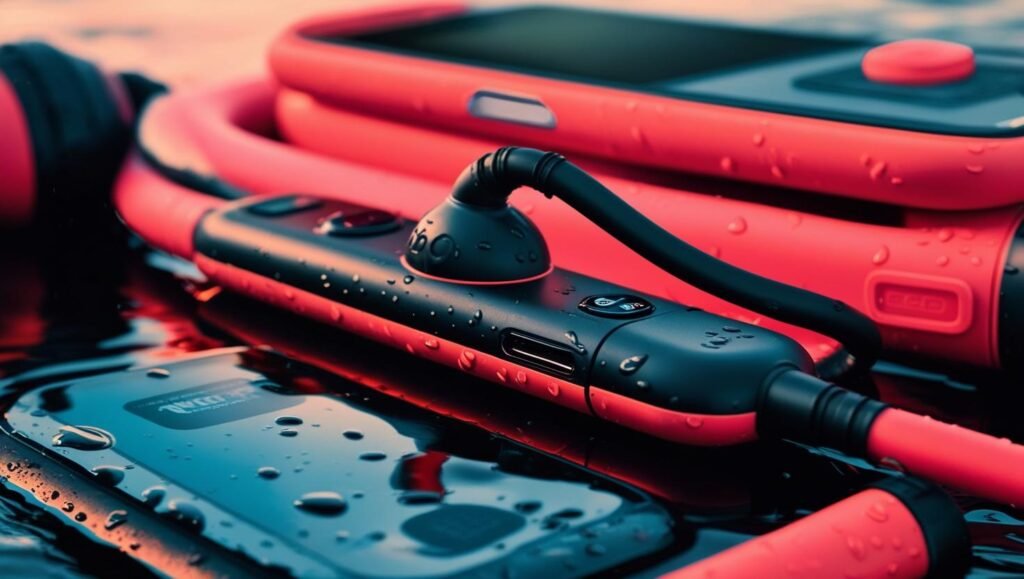
Understanding Waterproof IP Ratings
An IP rating, or Ingress Protection rating, is a standard that shows how well a device is protected against solids (like dust) and liquids (like water). It’s usually written as “IP” followed by two numbers. The first number (0-6) rates protection against solids, and the second number (0-9) rates protection against liquids. Higher numbers mean better protection. For example, a phone with an IP68 rating is dust-tight and can handle being submerged in water.
Waterproof IP ratings serve as a critical standard for evaluating the protective capabilities of various electronic devices against water and dust intrusion. The acronym ‘IP’ stands for “Ingress Protection,” which encompasses a system of codes designed to specify the level of protection a device offers against the elements. An understanding of these ratings is essential for consumers seeking reliable waterproof devices, particularly in environments where exposure to moisture is a concern.

The IP rating system comprises two digits following the ‘IP’ designation. The first digit indicates the degree of protection against solid objects, such as dust, while the second digit provides information regarding protection from liquids. For example, an IP57 rating signifies that the device is dust-tight (5) and can withstand occasional immersion in water up to one meter for a specified duration (7). Notably, a higher rating reflects better protection; therefore, consumers should prioritize devices with appropriate ratings based on their intended usage.
Misconceptions surrounding waterproof devices often lead to confusion. For instance, many consumers equate waterproof with submersible, mistakenly believing that any claim of being waterproof means the device can be safely used underwater. Such assumptions can result in disappointment when a device fails to perform as expected in wet conditions. It is crucial to differentiate between devices with ratings such as IPX7, which offers limited waterproofing capabilities, and those rated with more stringent standards, like IP68, which allows continuous immersion in water. By comprehensively understanding these ratings, buyers are better equipped to make informed decisions, ensuring that their devices meet their specific requirements for durability and resistance to environmental challenges.
Decoding Common IP Ratings: IP57, IPX7, IPX5
The Ingress Protection (IP) ratings, including IP57, IPX7, and IPX5, provide critical information regarding the dust and water resistance of electronic devices. Each rating consists of two digits that indicate the level of protection provided against solid particles and liquids. Understanding these IP ratings helps consumers make informed choices based on their needs and usage environments.
Starting with IP57, this rating signifies that the device is completely dust-tight (the “5” in this rating) and can withstand immersion in water up to one meter for 30 minutes (the “7”). The dust-tight characteristic is essential for devices used in environments with fine particles, such as construction sites or laboratories. The water resistance aspect makes IP57-rated devices suitable for use during outdoor activities where brief submersion might occur, though prolonged exposure should be avoided.
Next, IPX7 denotes a device that is protected from water immersion but does not provide a rating for dust ingress. The absence of the first digit (X) indicates that the device has not been tested for dust protection. This rating signifies that the device can endure being submerged in water up to one meter for 30 minutes. Devices with this rating, such as certain headphones or outdoor speakers, are ideal for activities like hiking or kayaking, where accidental water exposure is likely.
Lastly, the IPX5 rating indicates that the device is protected against water jets from any direction but is not rated for dust protection. This feature is crucial for equipment that may be used in environments where water spray is prevalent, such as kitchens or bathrooms. Devices with this rating offer reliable protection against moisture, making them suitable for various daily uses.
In summary, Waterproof IP ratings like IP57, IPX7, and IPX5 play a significant role in determining a device’s environmental resilience. Understanding these ratings allows users to assess whether a device meets their specific needs. Choosing the right rating can enhance the longevity and performance of electronic devices in various conditions.
How to Choose Water-Resistant Products: Tips and Considerations
When selecting water-resistant products, it is vital to understand the meaning behind various Ingress Protection (IP) ratings. These ratings provide consumers with essential information about a product’s ability to withstand water exposure, but interpretation can be confusing. To make informed choices, consider factors such as the level of anticipated water exposure, the environment in which the product will be used, and your specific needs.

Start by determining the intended use of the product. If a device will be used in a highly humid environment or exposed to rain, look for higher Waterproof IP ratings like IPX7 or IP57, which offer better protection against water ingress. For everyday use where limited exposure to splashes is expected, products with IPX5 ratings or similar may be sufficient. Recognizing the context in which the product will be utilized will guide you toward selecting the appropriate level of water resistance.
Next, familiarize yourself with different waterproof IP ratings. For example, IPX7 indicates that a product can be submerged in water up to one meter for a duration of 30 minutes. In contrast, IPX5 is resistant to water jets, meaning it can withstand water from a nozzle without any harm. Understanding these specifications will help you assess whether a product meets your durability requirements.
Additionally, consult user reviews and manufacturer specifications for practical insights into real-world performance. Different brands may interpret ratings variably, so additional context provided by users can help gauge a product’s reliability. Lastly, consider warranties and return policies; they can provide peace of mind when making a purchase. By following these considerations, you’ll be more equipped to navigate the marketplace and select a water-resistant product that fulfills your needs.
The Importance of IP Ratings in Everyday Life
Understanding waterproof IP ratings is essential for consumers as these classifications provide critical insight into a product’s durability and resistance to environmental factors. In everyday scenarios, waterproofing can be a significant consideration, especially for devices intended for outdoor use, such as smartphones, cameras, and wearable technology. For instance, an outdoor enthusiast who regularly engages in activities like hiking or biking must choose equipment that can withstand exposure to rain and splashes. Here, knowing the waterproof rating can help ensure that the device will function unscathed under such conditions.
Moreover, even in urban settings, waterproof IP ratings play a vital role. Daily commuters who rely on electronic devices may find themselves caught in sudden downpours or accidental spills. Selecting gadgets with an appropriate waterproof rating, such as those rated IPX7 or above, enhances the reliability and longevity of these devices. In fact, understanding the specification can prevent costly replacements and offer peace of mind to users who may worry about their electronics’ capacity to endure adverse weather.
Additionally, considerations extend into other areas of life. For example, choosing appliances for kitchens or bathrooms—commonly humid environments—requires assessing their resistance to water ingress as specified by waterproof IP ratings. A high IP rating ensures that the appliance can perform optimally without the risk of electrical failures or short circuits, thus enhancing user safety and convenience. As we evaluate the significance of these ratings, it becomes clear that they guide consumers in making informed decisions, ultimately prioritizing safety, functionality, and endurance in their purchases.





